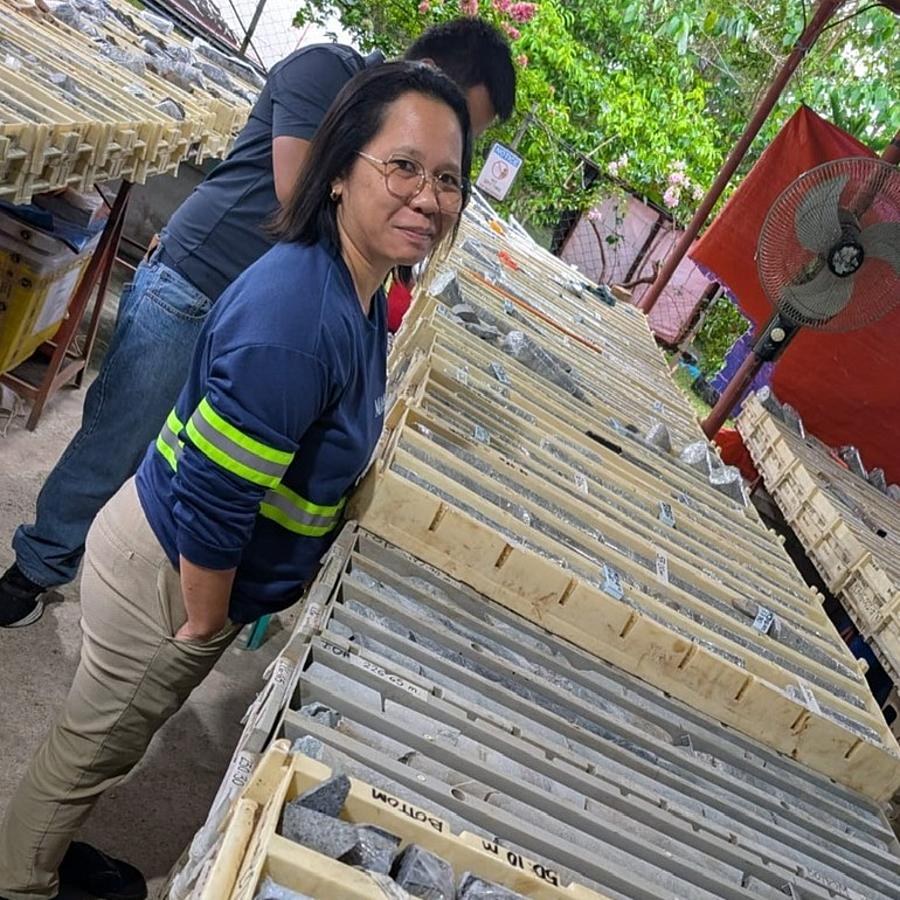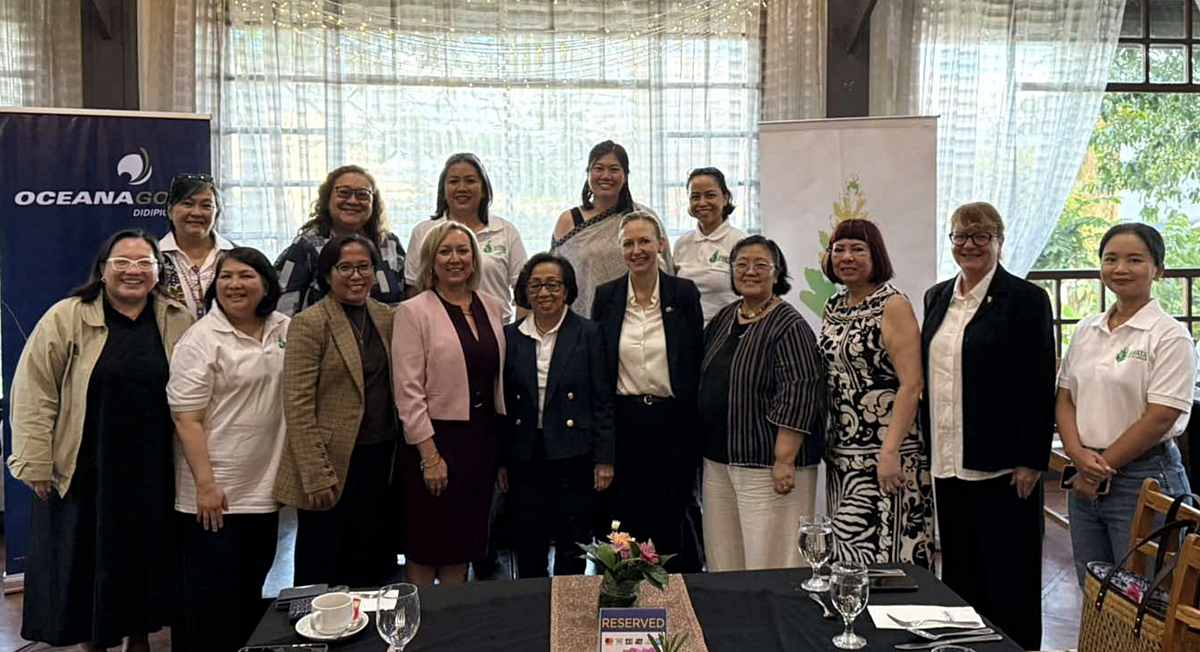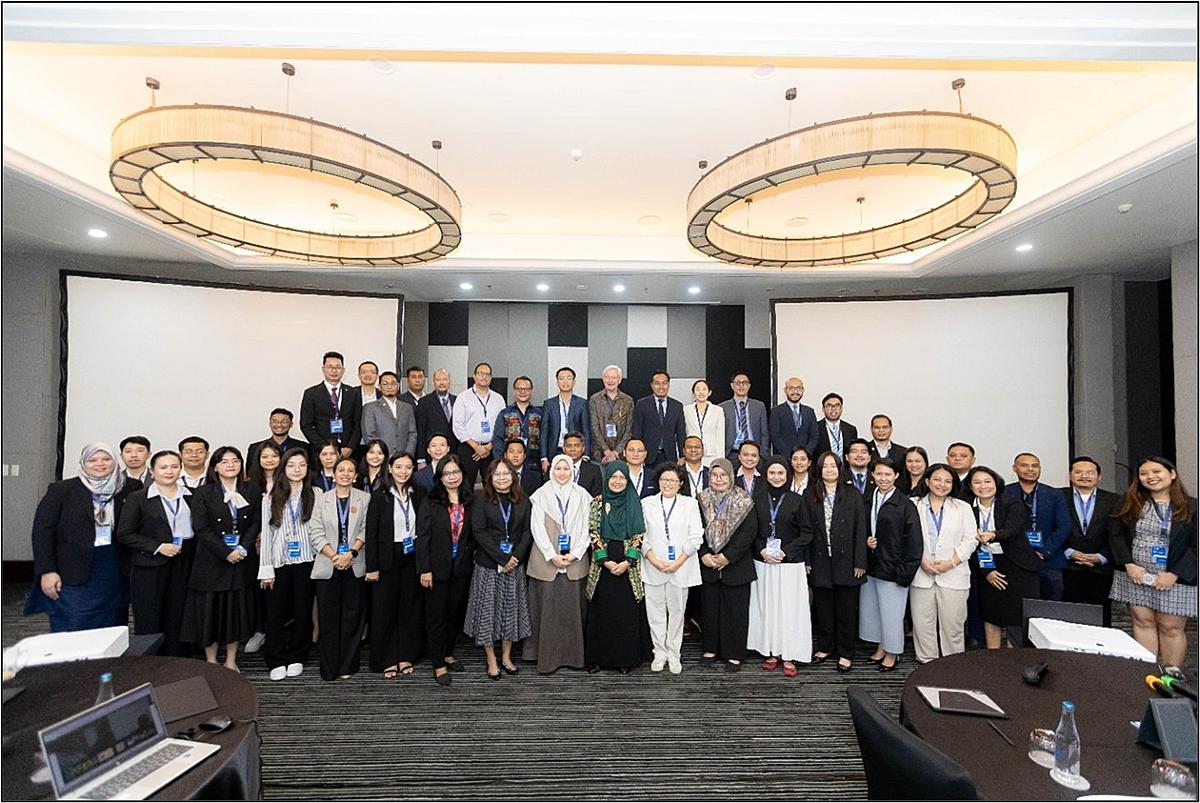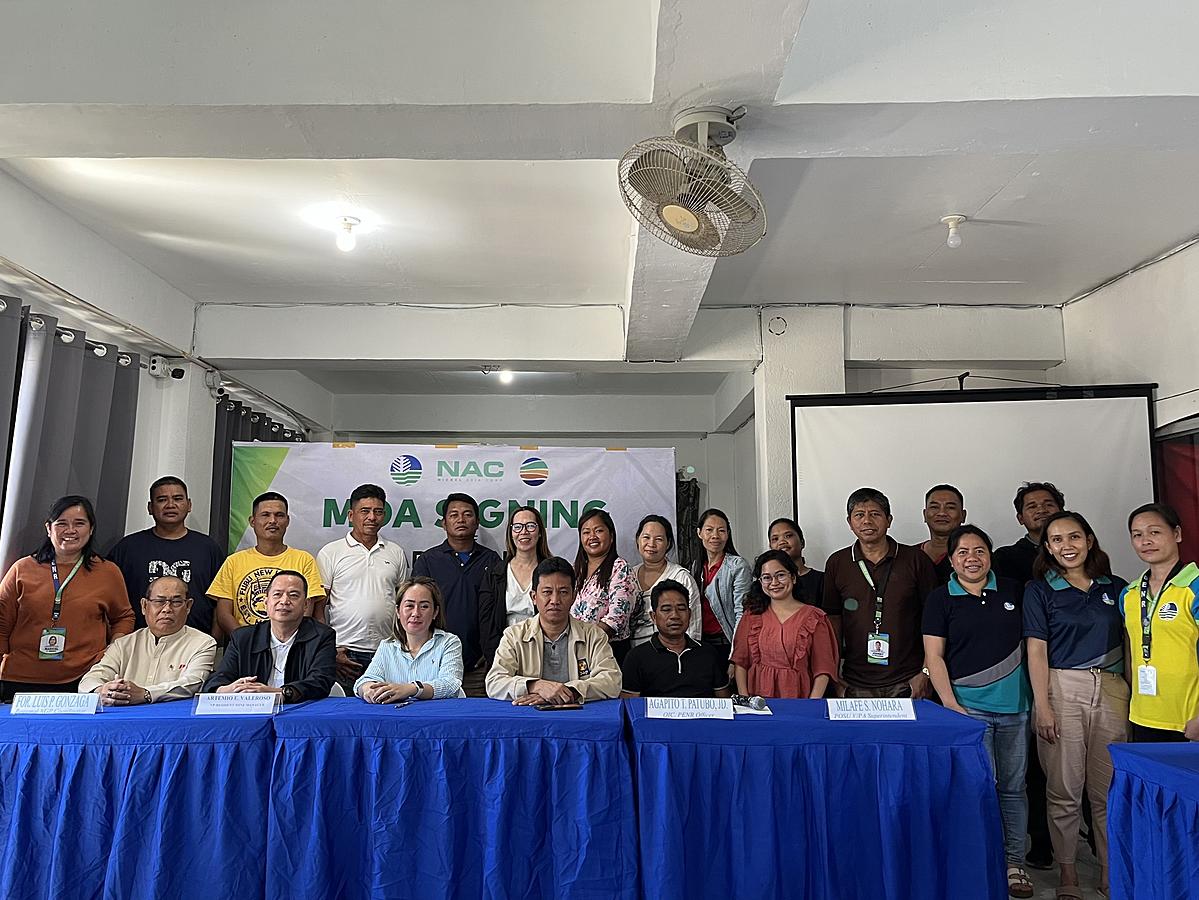[Assistant Secretary Allan Gepty of Department of Trade and Industry (DTI), International Trade Policy and Trade Negotiation]
How can the ASEAN-AU NZ Free Trade Agreement help the Philippines? Will their initiative and strategies for open economy help various Philippine industries like mining, construction, agriculture, transportation, telecommunications, and others?
Last 18 July 2022, the Philippines Australia Business Council (PABC) in partnership with the Australia Philippines Business Council (APBC) and the Australia New Zealand Chamber of Commerce (ANZCHAM) hosted a webinar about the ASEAN Australia New Zealand Free Trade Agreement (AANZFTA) and the Regional Comprehensive Economic Partnership (RCEP). Their guest speaker was Assistant Secretary Allan Gepty of Department of Trade and Industry (DTI), International Trade Policy and Trade Negotiation.
Atty Dennis A. Quintero was the moderator. He is the Chairman and Trustee of the Philippines-Australia Business Council (PABC). The opening remarks was given by Her Excellency Hellen B. De La Vega, Philippine Ambassador to Australia. Bradley Norman, ANZCHAM Vice President, and Rafael Toda, APBC Vice President, delivered remarks on behalf of their respective organizations.
Asec Allan Gepty gave a presentation titled “ASEAN-Australia New Zealand Free Trade Agreement (AANZFTA) and Regional Comprehensive Economic Partnership (RCEP): The Philippine Perspective”. His presentation promotes the concept of “Open Economy as the Key to Economic Growth and Development”.
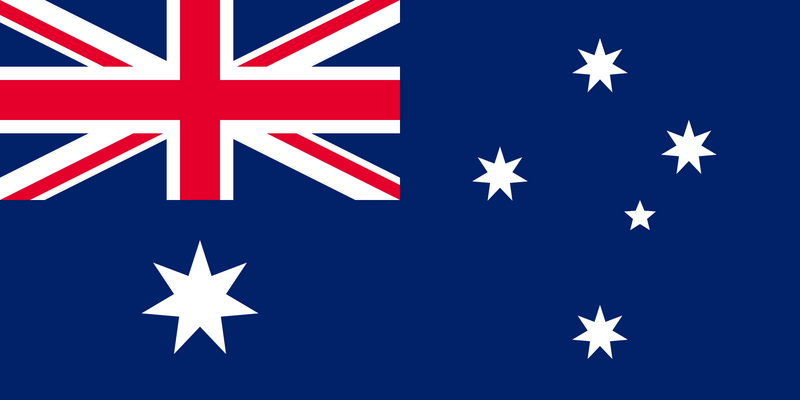
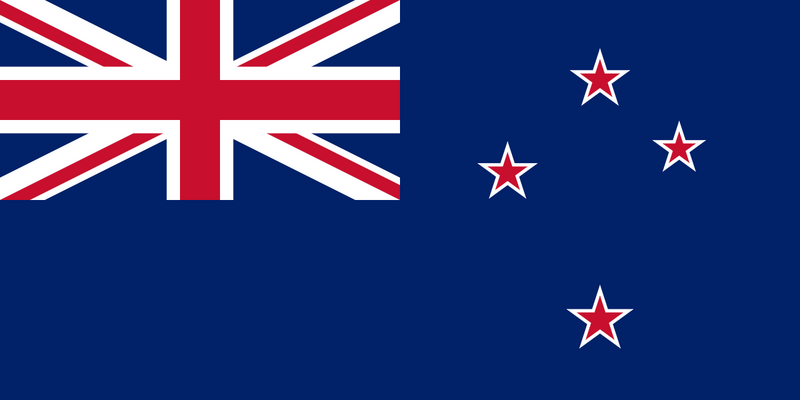
How can an Open Economy solve poverty?
According to the World Bank, “Trade is central to ending global poverty. Countries that are open to international trade tend to grow faster, innovate, improve productivity and provide higher income and more opportunities to their people.”
Here are some important key points from Asec Gepty’s presentation:
Open Economy in an interdependent world
In a highly globalized and interdependent world having an open economy is critical.
• Cooperation between and among States or economies ensures the stability of the global economy.
• Trade Agreements enable States or economies to effectively form stable relations through establishing rules and disciplines.
He mentioned that the Philippine Law also supports trade and open economy. The Supreme Court clarified that “while the Constitution indeed mandates a bias in favor of Filipino goods, services, labor and enterprises, at the same time, it recognizes the need for business exchange with the rest of the world on the bases of equality and reciprocity and limits protection of Filipino enterprises only against foreign competition and trade practices that are unfair."
Additionally, the Supreme Court noted, “fundamental law encourages industries that are competitive in both domestic and foreign markets, thereby demonstrating a clear policy against a sheltered domestic trade environment, but one in favor of the gradual development of robust industries that can compete with the best in the foreign markets. Indeed, Filipino managers and Filipino enterprises have shown capability and tenacity to compete internationally.”
(Tañada vs. Angara, G.R. No. 118295. May 2, 1997)
-----
Asec Gepty defines ASEAN Australia New Zealand Free Trade Agreement (AANZFTA) as a comprehensive FTA covering, among others, trade in goods, services, investment, and economic cooperation. It aims to progressively liberalize and facilitate trade among the Parties through:
- progressive elimination of tariffs and non-tariff barriers;
- progressive liberalization of trade in services with substantial sectoral coverage;
- facilitation promotion and enhancement of investment opportunities through a favorable investment environment; and,
- establishment of a cooperative framework for strengthening, diversifying and enhancing trade, investment and economic links among the Parties.
“As a single undertaking initiative, the Agreement contains 18 chapters and several annexes.”
Let us explore some of these chapters. Some of the Key Commitments in AANZFTA have chapters on Goods, Rules of Origin, Customs Procedures, Services, etc.
Under Goods, the key commitment is to reduce or eliminate customs duties in accordance with its schedule of tariff commitments. Rules of Origin provides the rules that will determine the originating status of goods produced within the AANZFTA Parties. Under Customs Procedures, the key commitments are to improve predictability, consistency and transparency in the application of customs laws and administrative procedures to ensure more efficient administration, and faster clearance of goods.
The chapter on Investment contains a framework to cover the treatment of investment and investment protection. Under E-Commerce, the key commitments are to adopt or maintain measures based on international norms to provide for electronic authentication, and to provide protection for consumers using e-commerce. The key commitments involved in competition recognises the importance of cooperation in the promotion of competition, economic efficiency, consumer welfare and curtailment of anti-competitive practices.
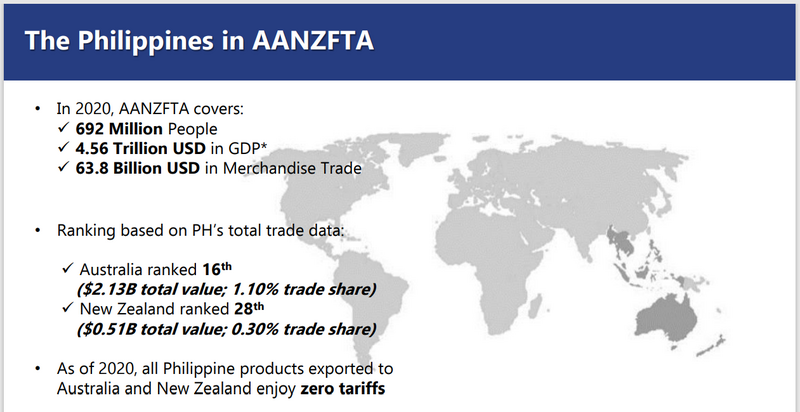
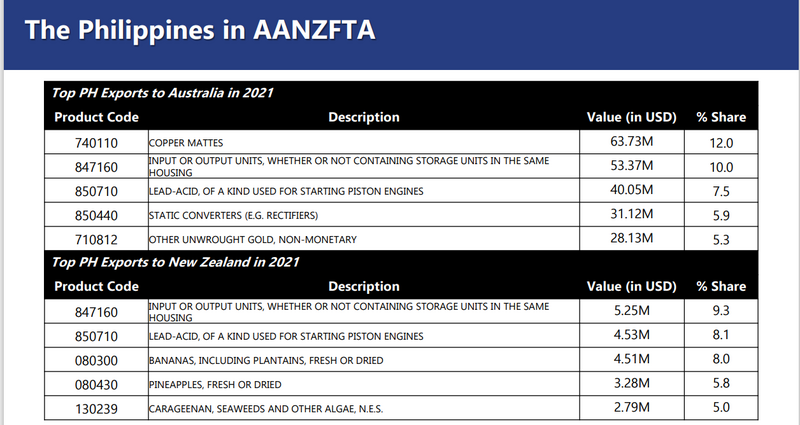
How can the Philippines benefit from AANZFTA? Here are important key points.
• With the aim of providing market access for all Parties, the AANZFTA has served as a mechanism for ASEAN, Australia, and New Zealand to liberalize Trade in Goods.
• Roughly, 94.42% of Philippine imports from AANZFTA Parties enjoy 0% tariff rates, while all Philippine exports to Australia and New Zealand enjoy 0% preferential tariff rate.
• The AANZFTA also incorporates the principles of liberalizing Trade in Services especially for market access, which could also encourage investors to enter in the region, especially for the Philippines.
• Of the 57 services sectors offered by the Philippines based on the W/120 Services Sectoral Classification List of 1991, 13 sectors under Mode 1 (Cross-Border Supply of Services) have been opened to Australia and New Zealand. Meanwhile, 33 sectors under Mode 3 (Commercial Presence of Service Supplier) are allowed to have more than 51% Foreign Equity.
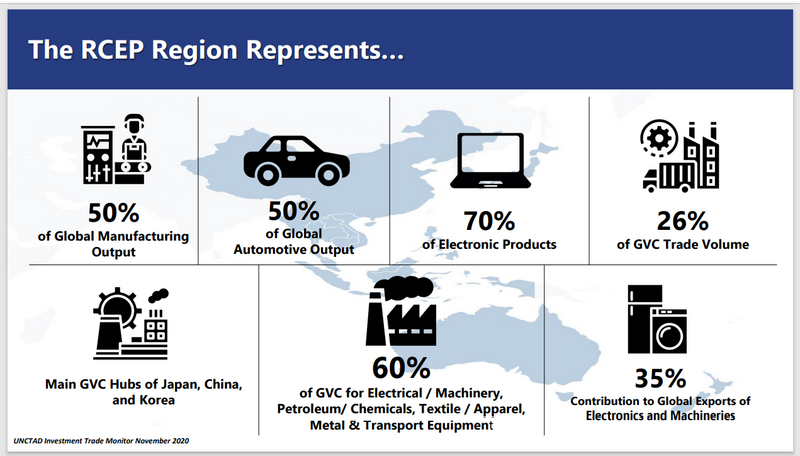
How is the Philippine mining industry connected with the open economy strategies of AANZFTA?
Primarily, Australia recognizes the countries in South and East Asia as instrumental in mutual success and prosperity for the mining sector.
The Australian government published “Australian Mining: New Frontiers, South and East Asia”. This is a guide for Australian trade negotiators and mining and METS* businesses to leverage trade and investment opportunities in emerging markets across Asia. (METS refers to Mining equipment, technology and services.) This guide is a Trade Agenda from the Minerals Council of Australia (MCA).
“New frontiers: South and East Asia” is a research study by Mike Adams, Nicolas Brown and Ron Wickes, the partners of Trading Nation Consulting, for the Minerals Council of Australia. The New Frontiers study will produce a series of reports identifying opportunities and setting out an agenda for Australian trade negotiators and mining and METS businesses to expand trade and investment links with emerging Asian economies.[2]
On the Foreword of this document, David Byers, Interim Chief Executive of Minerals Council of Australia, recognises the importance of Southeast Asian countries in the Australian mining industry.
He wrote, “Emerging markets across South and East Asia are the new frontiers for Australia’s mining and METS sectors.” [2]
“Australia’s mining industry has contributed enormously to the nation’s prosperity through its export success and international engagement. Asia has been a large part of this story, from the opening up of trade with Japan in the post-war period, which built Australia’s export coal industry, to the China resources boom, which kept Australia growing through the Global Financial Crisis. Resources now account for over half of Australia’s total exports – and the vast bulk of these are to the countries of Asia.” [2]
“This story still has a long way to play out. As Asia’s economies continue to develop, there will be significant new opportunities for Australian mining. The opportunities lie not only in exporting minerals commodities to new markets but in leveraging the skills, technology and expertise of Australia’s world-leading mining industry. There will be scope for Australian mining companies to invest and work with local partners in developing these economies’ own resources. And there will be export opportunities for Australia’s mining equipment, technology and services (METS) sector.” [2]
David Byers points out that realizing these benefits will require cooperation and engagement by the business and government in Australia in the region. “While the region’s economies are committed to open markets, there remains an array of impediments to mining and mining services trade.” [2]
-----
Acknowledgement:
Thank you to Assistant Secretary Allan Gepty of DTI and Atty Dennis A. Quintero of PABC.
-----
Reference:
[1] Gepty, Allan B. (18 July 2022). Webinar Presentation. “ASEAN-Australia New Zealand Free Trade Agreement (AANZFTA) and Regional Comprehensive Economic Partnership (RCEP): The Philippine Perspective”
[2] Adams, Mike; Brown, Nicolas; Wickes, Ron. “New frontiers: South and East Asia”
https://www.dfat.gov.au/sites/default/files/aanzfta-general-review-mca-submission.pdf?fbclid=IwAR1qc3gjhOejDh9ewq3iGMA6Zo5g4T29op2Ok7dD3to8dgJFvT8a3qvyEk4
-----
Infographics and Charts:
Credits to - Gepty, Allan B. (18 July 2022). Webinar Presentation. “ASEAN-Australia New Zealand Free Trade Agreement (AANZFTA) and Regional Comprehensive Economic Partnership (RCEP): The Philippine Perspective”
-----
Related article:
PH and AU’s Mateship and Bayanihan through ASEAN


